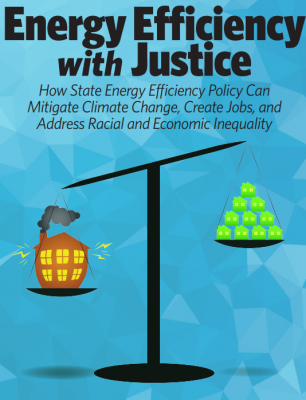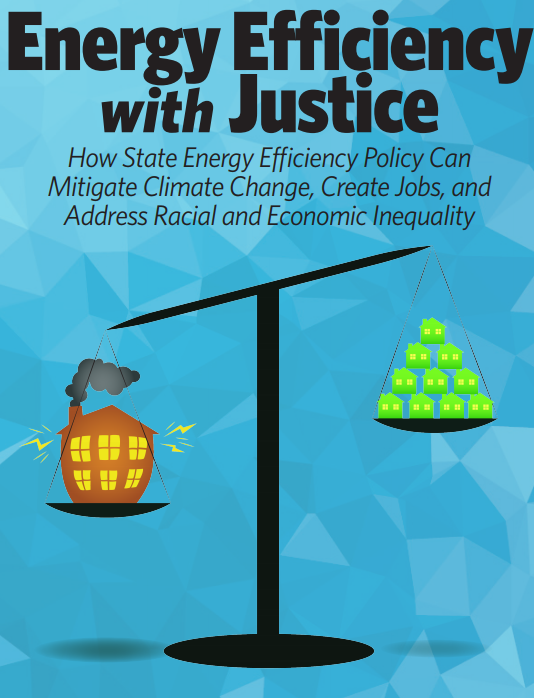 Our current fossil-fuel powered, dirty energy system cannot provide energy at a price that many vulnerable people can afford in order to live safe, healthy lives. Almost one-third of Americans face energy insecurity, and the shares are much higher for people of color and low-income people. At the same time, the very people who cannot afford the benefits of our energy system are paying a disproportionate share of its costs, as evidenced by their higher exposure to pollution and higher rates of pollution-related illnesses such as asthma. Energy efficiency addresses these inequalities at both ends, by making energy bills more affordable for vulnerable people, while also reducing the need for energy production (and therefore, reducing the associated pollution).
Our current fossil-fuel powered, dirty energy system cannot provide energy at a price that many vulnerable people can afford in order to live safe, healthy lives. Almost one-third of Americans face energy insecurity, and the shares are much higher for people of color and low-income people. At the same time, the very people who cannot afford the benefits of our energy system are paying a disproportionate share of its costs, as evidenced by their higher exposure to pollution and higher rates of pollution-related illnesses such as asthma. Energy efficiency addresses these inequalities at both ends, by making energy bills more affordable for vulnerable people, while also reducing the need for energy production (and therefore, reducing the associated pollution).
Energy efficiency is also an important driver of job creation. With the right policy tools, people from marginalized communities facing the double burdens of energy insecurity and energyrelated pollution can gain access to energy efficiency careers. This is another way in which energy efficiency can help address the inequalities in our energy system.
The particular policies covered in this report include:
- Energy-efficient building codes for new construction.
- Requirements for utilities to provide energy efficiency as a service to all customers, with
numerical targets for overall energy use reduction. - Appliance efficiency standards where not pre-empted by federal standards.
Targeted incentives for energy efficient lighting. - Financing mechanisms to address the high up-front costs of energy efficiency investment,
that do not burden low-income households with debt, and are accessible to renters as well
as homeowners.
A number of states have enacted one or more of these policies, but there are significant gaps. Some states have enacted some but not all of these policies, and some states have policies in place, but with targets that are set too low. Also, some state policies do not have an explicit focus on racial and economic justice, benefits for marginalized communities, and job creation and quality.
Some key findings and solutions:
Key findings and solutions
Addressing energy insecurity
- Almost one-third of Americans overall experience energy insecurity
- 62% of Native Americans, 52% of African-Americans, 50% of Native Hawaiians and other Pacific Islanders, and 51% of households with incomes under $20,000 experience insecurity
- Reducing residential and commercial energy consumption can reduce utility capital investment needs and consequent rate increases. Every dollar invested in energy efficiency saves ratepayers between $1.24 and $4.00
- High upfront cost barriers can be addressed by requiring utilities to set aside funds for low-income energy efficiency and supplementing these funds with direct state funding, and implementing inclusive financing tied to utility meters with on-bill repayment and bill neutrality
Addressing economic and social inequality
- Low-income communities of color have borne the brunt of toxic pollutants such as sulfur dioxide and nitrogen oxides due to the disproportionate location of polluting facilities in those communities. As a result, they suffer higher asthma rates
- Low-income households pay an average of 10% of household income on energy bills, compared to a national average of 2.9%
- Energy efficiency has the potential to create more and better paying jobs than conventional fossil-fuel based energy
- For every $1 million invested in building retrofits, almost 12 jobs are created — compared to numbers for the coal sector at 5, and oil and gas sector at 4
- From 2015 to 2016, jobs in Energy Star appliance manufacturing, distribution, and sales grew by 59%, and jobs in advanced building materials grew 53%, compared to a growth of only 9% in fossil-fuel burning electricity generation.
- Energy efficiency jobs have median hourly wages that are higher than the median wage for all occupations, and have a union representation rate of 14% compared to 11% for the entire U.S. workforce.
- 37% of households rent their homes, and the numbers are much higher for households with annual income below $20,000 (59%), African-Americans (58%), Native Hawai’ians and Pacific Islanders (56%), Latinx (55%), and Native Americans (52%).
- Inclusive financing for energy efficiency upgrades tied to utility meters and targeted incentives for owners of low-income rental housing to upgrade the energy efficiency of their buildings can help address the needs of renters
Combating the climate crisis
- The residential and commercial sector together account for almost one-third (32.9%) of U.S. greenhouse gas (GHG) emissions by end use — more than the end-use emissions of the entire transportation sector
- Reducing residential energy usage by 1.25% annually, and reducing commercial energy usage by 0.33% annually, in conjunction with other policies such as complete conversion of electricity generation to renewable sources, can reduce U.S. greenhouse gas emissions to 80% below 1990 levels by 2050
- Just a 5% reduction in residential and commercial electrical energy usage, if applied uniformly across the U.S. electric power generation fleet, leads to NOx emissions reduction equivalent to the emissions of the eight largest coal-fired power plants in the U.S., and SO2 emissions reduction equivalent to the emissions of the seven largest coal-fired power plants in the U.S
